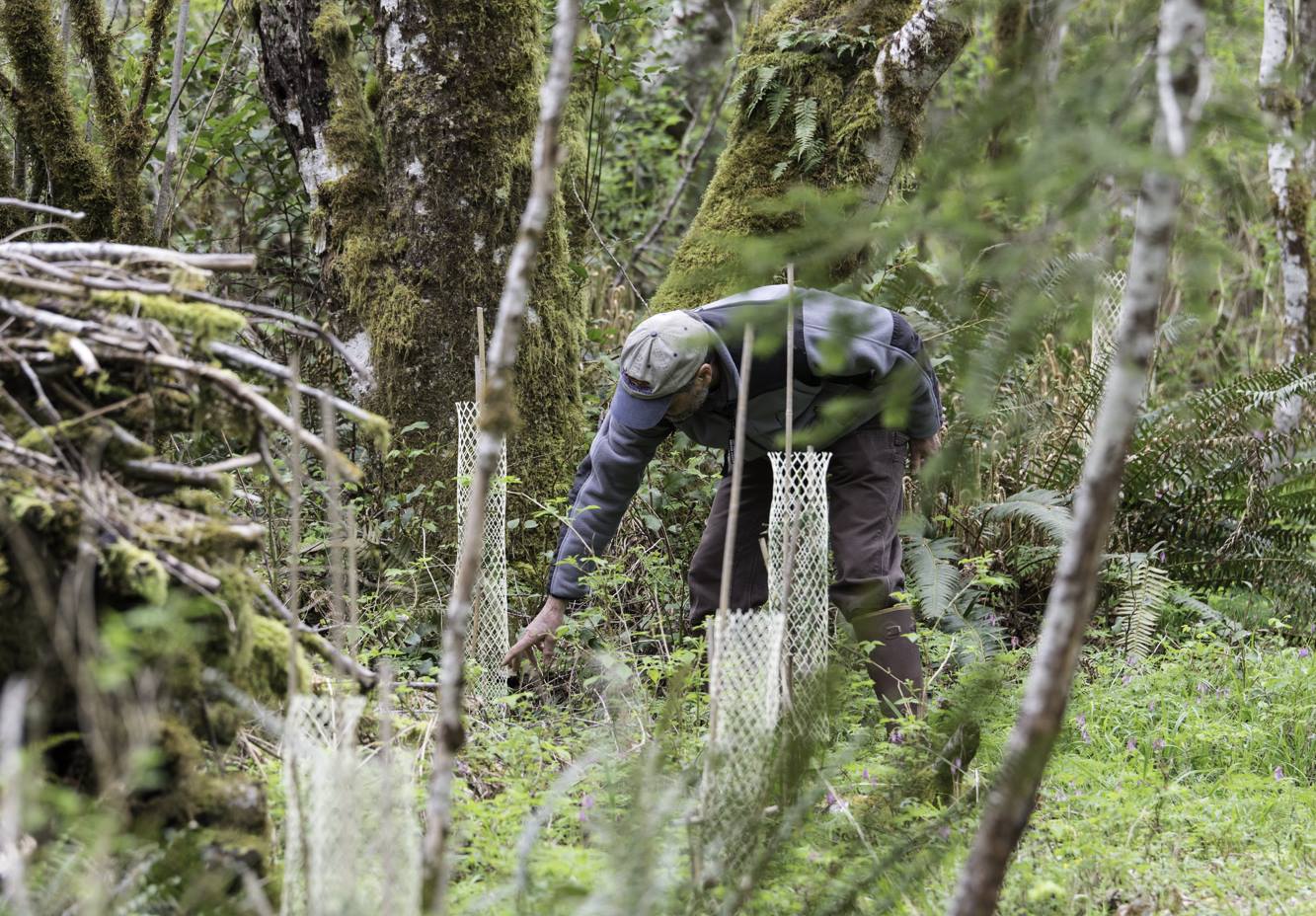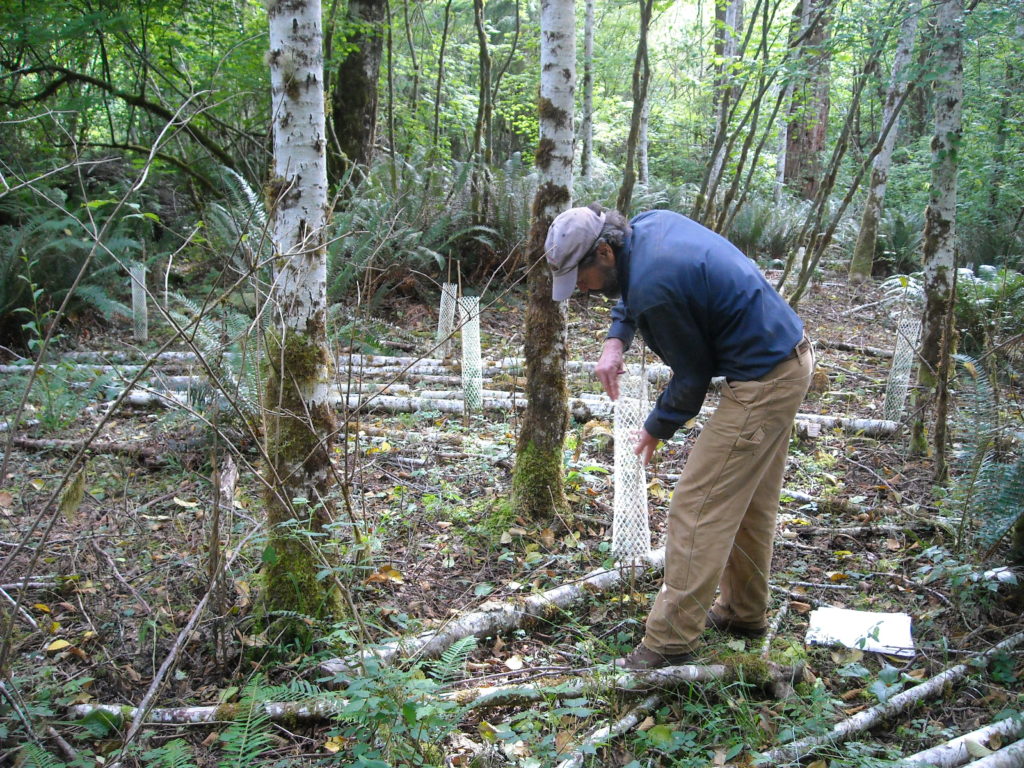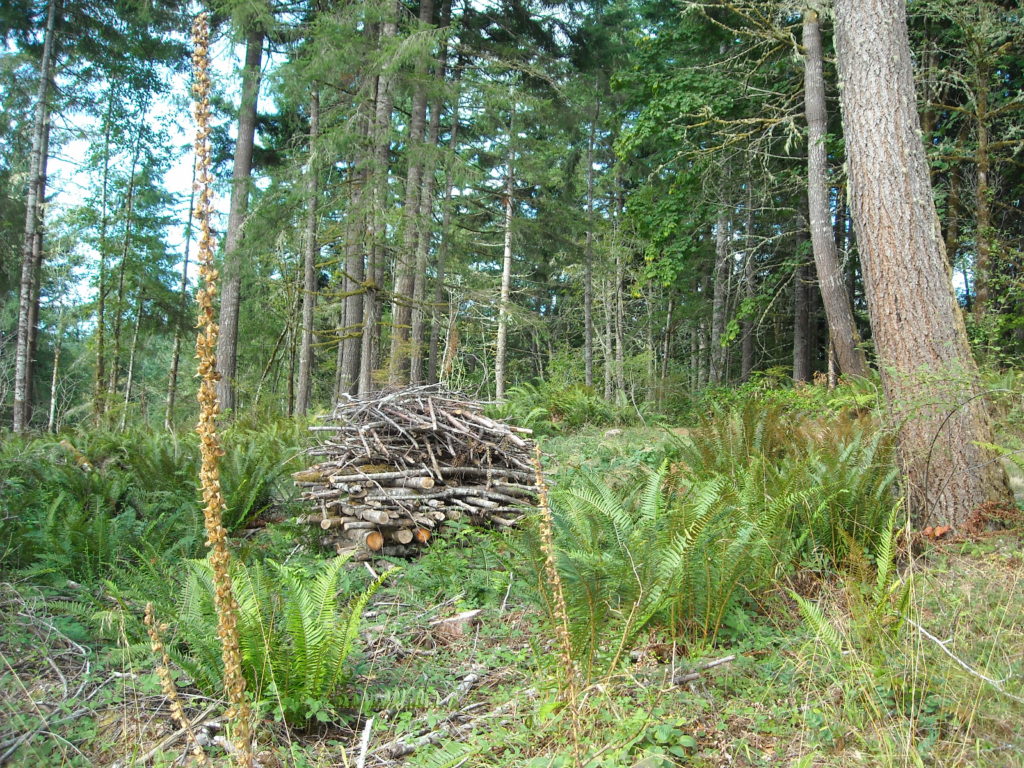EQIP and a Forest Classroom

Butler Family Forest, Olympia, WA
Nestled along Pants Creek and the Capital Forest near Olympia sits a 40 acre FSC® certified forest owned by Paul and Peggy Butler, and Jim Stroh and Jan Yancy. Paul, a retired Evergreen State College professor, and his partners bought the property from another former Evergreen professor in 1990 and believes that the property had not been thinned or logged in over fifty years. The property hosts a mix of mature Douglas-fir, western red cedar, western hemlock, red alder and big-leaf maple, as well as dense thickets of young, small diameter alder and vine maple. Paul originally planned to not manage the property and keep it in the condition he bought it. But then he started attending workshops hosted by Northwest Certified Forestry and decided to write a forest management plan and begin getting actively involved with his forest.
Ultimately, Butler would like to see the forest pay for itself and have the property serve as an educational environment for students. He recently applied for designated forestland classification through Thurston County to reduce the tax rate on his property. He also applied for cost-share funding through the Environmental Quality Incentives Program for a range of forest-stand improvement and wildlife-habitat enhancement practices across his land.

Recently, the owners of the property decided to harvest some of the mature alder. Butler chose to use Westek Ltd, a NCF Preferred Provider to complete this harvest. John Zapel, President of Westek Ltd said, “I prefer working with the pace of
FSC landowners.” Zapel, a long time veteran in the forest products industry, has over thirty years of experience working with a variety of landowners. John originally started working in the industrial side of the forest products industry but then decided he wanted to target niche markets such as FSC. John is also known for using newer technologies that reduce soil compaction such as his Scandinavian Harvester.
The objective of the harvest was to remove a roughly ten acre patch of 40+ year old timber that was showing signs of decline, then replant the area with a mix of native conifers. “We left the older legacy trees because they provide diversity to the area. By planting young conifer throughout the unit, we will also develop a mixed age class forest over time,” said Butler. “Eventually the alder would have naturally fallen apart and the site would have become a mixed conifer stand. We are simply removing the alder at just the right time to capture its value, then replanting the area to replicate the natural succession of the site.” Paul plans to replant with Douglas fir, western red cedar, and spruce .
Approximately 5 percent of the alder timber throughout Paul’s harvest unit qualified as veneer grade. Veneer quality logs can fetch as much as 2 – 3 times the value of conventional saw logs. International Veneer Company, an FSC certified mill, purchased all of the veneer logs from Paul’s property. The five acre unit also yielded 50 mbf of saw logs and 10 truckloads of pulp.

Butler has also taken steps to improve wildlife habitat on his property. He recently received an Environmental Quality Incentives Program (EQIP) grant to complete a pre-commercial thin on several acres of dense alder and interplant the area with shade-tolerant conifers. EQIP is a federal cost-share program run by the Natural Resource Conservation Service and is designed to help landowners cover the cost of various conservation practices from pre-commercial thinning to building bird boxes. Butler is using much of the slash from the alder thinning to build large habitat piles that provide shelter for small mammals and amphibians. Paul currently has about 85 habitat piles but intends to increase the number to 120. The piles also act as nutrient inputs for the soil and serve a similar function as large decaying downed logs.
Butler also hopes his property will help provide a hands-on experience for Evergreen students. “There is about a half-acre of wetland where we could build a boardwalk for observational studies,” Butler stated as one of his many ideas for students. Recently, a group of students thinned a young alder stand on the edge of Paul’s property. Many of these students were excited to gain hands-on experience with sustainable forestry and would like to continue to do projects on Paul’s property. Some students also expressed interest in gaining a scientific understanding of Paul’s habitat piles and how they affect various animal populations throughout the forest. Paul hopes to maintain working relationships with Evergreen professors, including forest ecology professor Dylan Fischer. “Evergreen’s 1,000-acre forest reserve is very hands off, so I think providing an area for students to experiment like this will be useful.”
Paul said that he was surprised to see such a large gap in the forest canopy after his recent alder harvest, but ultimately understands this is part of a much longer term plan for the forest. “I will be more selective with my logging after this harvest, one tree at a time,” he said. Paul sees a bright future for his forest with a vast array of possibilities. “We might bring up a mill and build a shed to produce air-dried lumber.” Paul continues to learn about the forest and how to work with the land. “This is all a learning experience,” he says.
Inspired? Learn what EQIP can do for your forest:

Leave a Reply